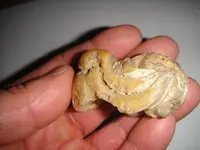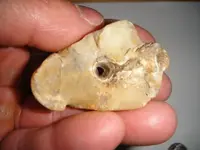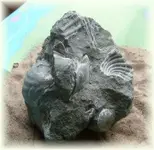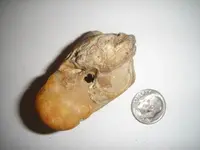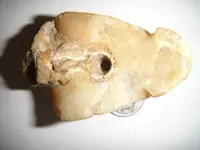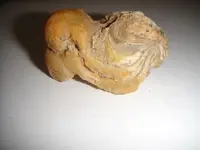unclemac
Gold Member
- Joined
- Oct 12, 2011
- Messages
- 7,446
- Reaction score
- 7,855
- Golden Thread
- 0
- Primary Interest:
- Beach & Shallow Water Hunting
- #1
Thread Owner
The material is agate, the hole through it has some of the original shell still attached to it. It comes from a beach where I have found other agate fossils of clams, snails, twigs etc. that date to about 80 million years ago....but for the life of me I just can't figure out what it is, (other than the obvious).



